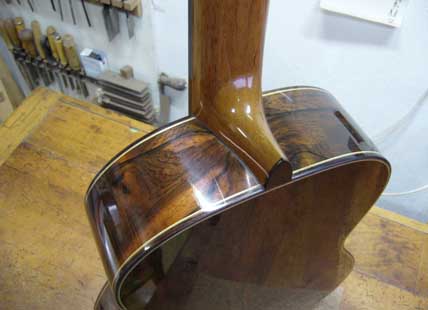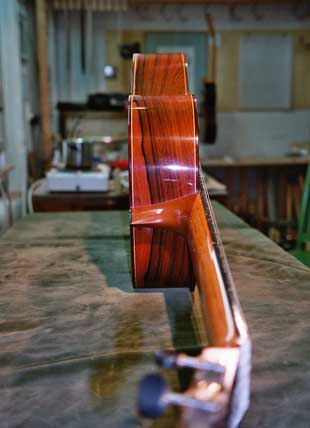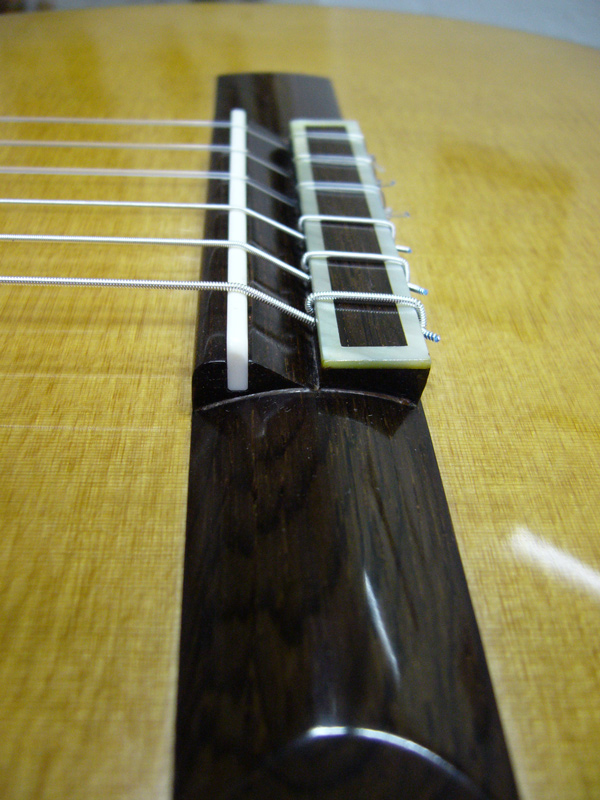Classical
Woods:
Many types of wood are used in traditional guitar construction: diverse Spruce and Cedar species for the top, and various Rosewood, Maple and Cypress species for back and sides.
Fingerboards are made of Ebony, and Mahogany related woods are used for the neck, i.e. Spanish cedar (Cedro), Sippo or Khaya.
To achieve a desired result (concerning colour spectrum, function and aesthetics) they may be variously combined (a well known example is the combination of Spruce and Cypress for a certain kind of flamenco guitar).
Finish:
French polish (see also: news-shellac)
General remarks:
tuning machines, rosette designs, neck profile and dimensions, string spacing, etc. according to individual preference and by request.




Scale lengths, Models:
Every scale length is available, common is a length between 63 and 66 cm.
Acoustically treated the guitar forms a coupled oscillation system (see also: workshop).
Starting with scale length further components like body dimensions, bridge position, depths of sides, sound hole diameter and position, etc. must fit together.
Aside from acoustic considerations there also exist aesthetic reasons to correlate the body dimensions.
It is no coincidence if a design appears elegant or plump.
Outline shapes and other sizes of former musical instruments mostly were composed in every detail (similar to former architecture and fine arts).
Plenty of geometric basic shapes, symmetry axes, and correlation of proportion can be found. Certain principles recur and can be transferred to modern guitars. At the moment I use 5 different body shapes.
